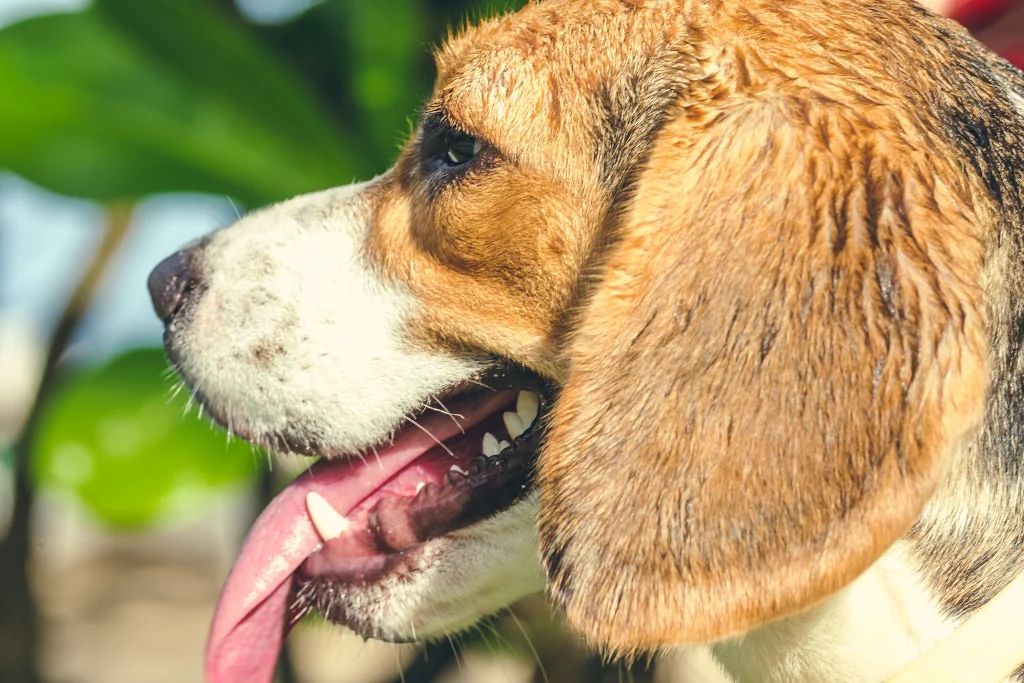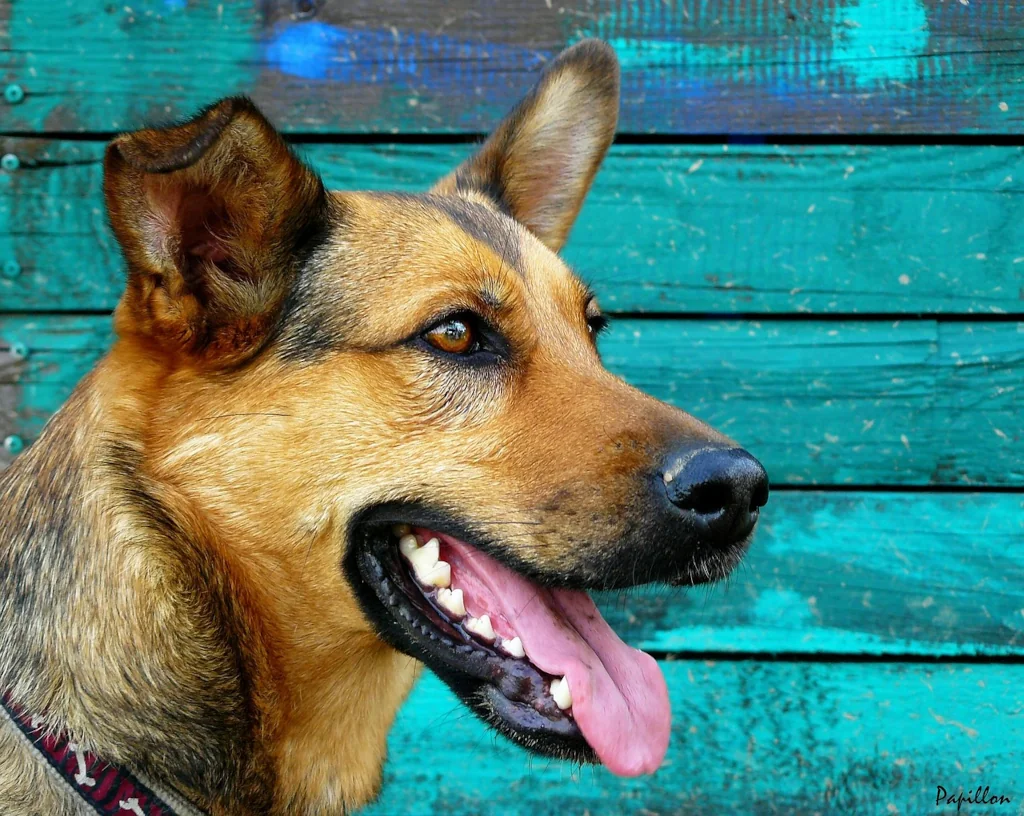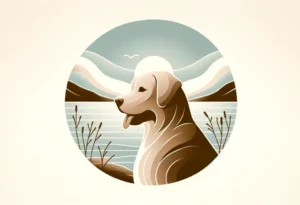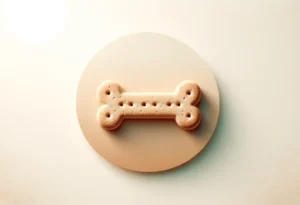Opening the door to find your furry best friend with tail wagging and a sloppy kiss at the ready—it’s a dog owner’s everyday delight.
But what if this happy reunion is followed by a whiff of…oh dear, doggie bad breath? Or worse, what if your once-enthusiastic chewer loses interest in their favorite toy, showing signs of discomfort when they try to chew?
While we might chalk it up to them just having an off day, these could be signs of underlying dental issues, something we may not think about often in our pet’s health regimen.
In the whirlwind of walks, feedings, and cuddles, it’s easy to overlook one aspect of our pet’s health—their dental hygiene.
Your dog’s teeth need the same level of care and attention as your own, and failing to keep an eye on their oral health can lead to issues ranging from bad breath to serious dental disease.

Why Monitor Your Dog’s Dental Health?
Keeping tabs on your dog’s dental health isn’t just about warding off bad breath—it’s about ensuring their overall well-being.
Just like in humans, dental problems in dogs can lead to other health complications if not addressed promptly. Bacteria from a dog’s mouth can enter the bloodstream and cause heart, liver, and kidney issues.
Regularly monitoring their oral health helps catch signs of trouble early, potentially saving you costly vet bills and, most importantly, sparing your pet unnecessary discomfort.
Remember, your pup may not show they’re in pain until the problem becomes severe. As their trusted human, it’s your responsibility to protect them, and that includes keeping an eye on those canine canines!
Spotting the Signs: Is Your Dog in Trouble?
Here are some signs to watch out for that could signal your dog is having dental troubles.
Unexpected Bad Breath
If your dog’s breath could knock out a small army, it’s a pretty clear indication that something’s up.
Bad breath in dogs is often caused by bacterial build-up, which could be a sign of dental disease. A slight doggy odor is normal, but a strong, unpleasant smell warrants a closer look.
Loss of Interest in Chew Toys
Dogs love a good chew session. It’s a natural behavior and a great source of entertainment.
If your pup suddenly loses interest in their favorite chew toy, it could be a sign that chewing is causing discomfort or pain. Don’t overlook this change in behavior—it’s your dog’s way of telling you something’s not right.
Changes in Eating Habits
Similar to losing interest in chew toys, changes in eating habits, particularly difficulty eating or a sudden preference for soft food, can signal dental problems.
Dogs with tooth pain may drop food out of their mouth, eat on one side only, or eat much slower than usual. Keep an eye on their food bowl; it can tell you a lot!
Red, Swollen Gums or Bleeding
Healthy dog gums are firm and pink, not red or white, and should not bleed.
Red, swollen gums, also known as gingivitis, is a sign of inflammation and often an early warning sign of periodontal disease. If you notice your dog’s gums looking a bit angry or they wince when you touch their mouth, it’s time for a vet visit.
Excessive Drooling
While some dogs are naturally more ‘drooly’ than others, sudden, excessive drooling can be a sign of dental issues, especially if it’s accompanied by a change in mouth odor.
It might be messy, but paying attention to your dog’s drool can help you catch dental issues early.
Visible Tartar or Discolored Teeth
Tartar is a hard brown or yellow deposit on the teeth, which happens when plaque accumulates and hardens. It contributes to gum disease and bad breath.
If you can see discolored, brownish teeth or a crusty deposit at the gum line, it’s a sign your dog needs a dental check-up.
These signs are your early warning system, helping you catch potential problems before they turn into major issues. So be a dental detective for your pup, because nothing beats a healthy, happy smile on your furry best friend!
The Causes of Dental Issues in Dogs
Believe it or not, your dog’s dental issues may be a product of factors you CAN control, and understanding these can help prevent future dental woes:
- Poor Oral Hygiene. Just like in humans, the number one cause of dental issues in dogs is poor oral hygiene. Regular brushing of your dog’s teeth can remove plaque before it turns into tartar, a harder substance that sticks to the teeth and contributes to gum disease.
- Lack of Dental Toys. Chewing on dental toys can work wonders in massaging your dog’s gums and cleaning their teeth. Inadequate access to suitable dental toys means your dog misses out on this natural, and surprisingly effective, method of dental care.
- Inadequate Diet. What your dog eats affects their oral health. A diet lacking in certain nutrients can result in poor dental health, while dry food, in moderation, can help scrape off plaque.
- Breed Genetics. Some dog breeds are prone to dental problems due to the shape and size of their mouths and teeth. Small breeds often suffer because their teeth are crowded together, while brachycephalic breeds (think Bulldogs and Pugs) are notorious for dental troubles.
Advice: Prevention is the best cure. Implement a consistent oral hygiene routine for your dog, provide dental toys, and feed a balanced diet. Monitor breeds prone to dental issues more closely, and start dental care early in their lives.

Can You Check Your Dog’s Teeth at Home?
Absolutely, yes! In fact, regular at-home check-ups are essential for catching dental issues early.
You don’t need to be a vet to perform a basic dental check-up. Lift your dog’s lip and check their gums and teeth. Gums should be pink, not red or white, and teeth should be clean without any brownish tartar.
While it’s common for dogs to have a certain doggy breath, a foul or strong odor could suggest a dental problem. If your dog’s breath is consistently smelly, it’s time to consider a vet visit.
Also, observe your dog when they eat. Are they struggling? Eating slower than usual? Or have they developed a preference for soft food? Changes in eating behavior often signal dental issues.
While some breeds are naturally drool-prone, a sudden increase in salivation, especially if paired with a change in mouth odor, could signal dental problems.
Regular home checks can’t replace professional dental cleanings, but they are a valuable tool for early detection of potential issues. However, if you notice any irregularities during these home checks, or if your dog seems uncomfortable while you’re examining their mouth, book an appointment with your vet.
Prevention is always better than treatment. Consider brushing your dog’s teeth – it’s quite easy, and it starts with picking the right toothbrush for your pup.
Vet Time: When Should You Make That Call?
There’s a fine line between being an attentive pet parent and rushing to the vet at every sneeze. But when it comes to your dog’s dental health, some signs scream ‘vet time!’ Here’s when you should consider picking up the phone:
- Prolonged Bad Breath. An occasional whiff of bad breath may not warrant a vet visit, but persistent, unusually foul breath can be a sign of severe dental issues.
- Loss of Appetite. If your dog is skipping meals or showing less interest in food, they could be experiencing oral pain. A vet visit can help pinpoint the cause and appropriate treatment.
- Visible Signs of Trouble. Red, swollen gums, or visible tartar buildup are signs your home dental care might not be enough. Your vet can offer a professional dental cleaning and recommend improvements to your care routine.
A few years back, my older dog, Sam, started to lose interest in his favorite chew toys. He’s a real fan of tug-of-war, and he’s quite good at it too. But one day, Sam just wouldn’t pick up his rope toy.
I thought he was just being a little lazy, but when he also turned his nose up at a treat, I knew something was off. Turns out, Sam had a sore tooth that was bothering him. A quick vet visit and treatment got him back to his playful self in no time!
So keep an eye on your dog’s dental hygiene, and you may just save your dog’s health as well as save yourself some serious medical bills. It’s a win-win however you look at it.
FAQs
How often should I check my dog’s teeth?
For optimal dental health, inspect your dog’s teeth at least once a week. Regular checks help spot early signs of dental issues, like tartar buildup, inflammation, or damaged teeth.
Is bad breath always a sign of dental problems?
While occasional bad breath can be due to something your dog ate, persistent bad breath can indicate underlying dental issues like gum disease or oral infection.
What should healthy dog gums look like?
Healthy dog gums should be a consistent pink color, with no signs of swelling or bleeding. If you notice red lines along the gumline or white, ulcerated areas, consult your vet.
Can certain foods help improve my dog’s dental health?
Absolutely. Crunchy kibble and dental treats can help reduce plaque buildup, while foods high in Omega-3 fatty acids like fish can help maintain healthy gums. Consider incorporating dental-friendly diets after consulting with your vet.
Alex, a passionate animal lover, has experience in training and understanding animal behavior. As a proud pet parent to two dogs and three cats, he founded AnimalReport.net to share insights from animal experts and expand his knowledge of the animal kingdom.




